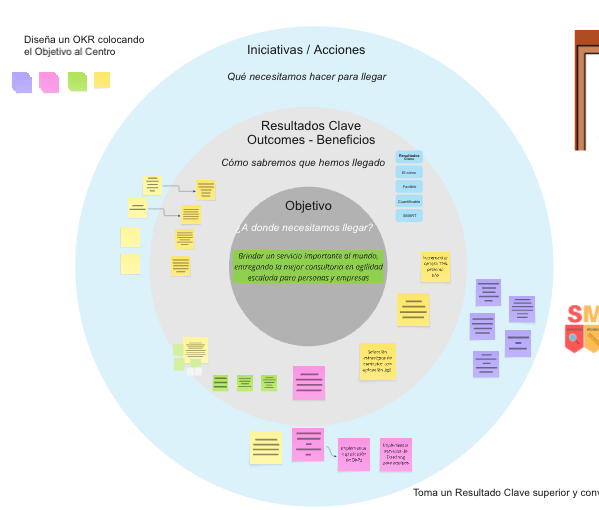🚀 Align and Inspire with OKRs
✨ Are your teams focused on what really matters? Stop Chasing Deadlines. Start Chasing Purpose.
MANAGEMENT 3.0AGILEMETRICS
Lautaro Martín
5/2/20252 min read


Is your team busy but not truly delivering results? 🤔
🎯 OKRs might be the game-changer your organization needs.
🌟 Here’s how we used them, what we learned, and why there's no going back.
🚀 Introduction
In an increasingly uncertain and fast-paced world, being busy is no longer enough — we need focus. And not just any focus, but one that’s shared across the entire team. In our search for a tool that bridges strategic direction with agile execution, we discovered OKRs.
In this post, we’ll share our real-world experience implementing them and what we learned along the way.
🎯 What Are OKRs?
OKRs (Objectives and Key Results) are a goal-setting methodology that helps teams and organizations stay focused, aligned, and data-driven.
Objective (O): A qualitative, inspiring goal that sets the direction.
Example: Improve customer experience.
Key Results (KRs): Quantitative, measurable outcomes that show progress toward the objective.
Example: Reduce support tickets by 30% within 3 months.
OKRs were born at Intel and made famous by Google. Today, they are part of the DNA of agile and high-impact companies.
💡 Why We Decided to Implement OKRs
We were stuck in a cycle of deliverables and tasks without a clear connection to strategic goals.
The key questions were:
Are we working on what really matters?
How do we know if we’re on the right path?
How can we align everyone toward a common goal?
OKRs came as a concrete solution to these challenges. They're not just a trend — they’re a powerful tool to clarify priorities and empower teams.
🛠️ How We Implemented Them
Training and alignment: We ran workshops to help everyone understand what OKRs are and how to use them.
Co-creation: We defined our quarterly OKRs together, based on strategic objectives.
Full visibility: We made OKRs accessible to everyone using a shared and colaborative and visual tool (Miro) — no hidden docs.
Ongoing tracking: We reviewed progress biweekly in our dailies and retrospectives.
Iteration: We learned to write better KRs, keep them few, and prioritize impact over quantity.
📚 Learnings and Conclusions
Less is more: A few well-crafted OKRs are worth more than a long list of vague goals.
Culture matters: OKRs don’t work without a culture of transparency and feedback.
Fail fast, learn faster: Our early attempts weren’t perfect, but they helped us improve.
Commitment, not punishment: OKRs aren’t about control — they’re a shared compass.
Today, our teams have clarity, focus, and a sense of purpose. Most importantly, they know their work contributes to something greater. 🌱


